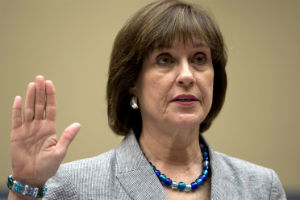Winning back lapsed donors is critical to an organization’s growth. The long-term value of a recaptured donor is usually better than that of a new donor. In addition, the cost to recapture a lapsed donor is less than the cost to acquire a new donor.
Prior to lapsing, these individuals were committed donors and might have supported your organization for an extended period. Circumstances that caused a change in their behavior could no longer be an issue, and therefore, understanding why they lapsed will help you develop a strong program focused on recapturing their loyalty.
First things first: Be sure to invest your dollars wisely. The initial step in developing any win-back program is to define the goal. It is best to think in terms of recovering recapture costs within two years. This can be accomplished by:
- Identifying only the best candidates for recapture, such as multiple givers and consecutive year givers; and,
- Employing strong, varied techniques to draw a recommitment. Once the recapture audience and tactics are defined, you will be able to use the 20 percent to 25 percent of your budget saved by excluding ineffective audiences towards front-end opportunities to retain/renew more donors.
Let’s take a closer look at identifying the best candidates for a basic recapture program. It’s easiest to work backward and first identify who should not be included in the program. Generally, you would want to review your donor file and gift history and exclude the following categories of donors from your recapture program:
- Donors whose last gift was at 60-plus months. These individuals will likely draw a low response.
- Under $10 donors
- 1 gift only donors
Now that you’ve narrowed your file, you can begin to identify the donor groups that will be included in the program. The following categories have proven to be the most appropriate for a basic recapture program:
- $10+ donors. This segment represents a decent prospect.
- $15+ donors
- Donors with 2+ gifts or those that gave 2 consecutive years or more**
The $15-plus donors and the donors with two or more gifts or who gave two consecutive years hold the greatest potential for revenue generation and recapture.
In addition to the above, you should consider testing a message to donors with no gift for 13 months, as well as those with no gift at nine months, to determine their potential for future inclusion.
When planning a recapture strategy, you will want to treat your monthly donors differently. You should consider who to include in your monthly recapture program, as well as when to approach lapsed monthly donors. Some basic questions to ask, when planning for a monthly recapture strategy, include:
- Are you encouraging lapses in your current system of mailings to donors in monthly programs?
- Are your mailings on time?
- Does a member receive a monthly mailing even if they missed the previous month?
After assessing the answers to these questions you will have a better idea of which donors are in fact lapsed versus those who might not have given due to issues in the mailing schedule. At this point you can begin to look at the length of time lapsed; for example four, five or six months might be the right spot or, after just two months with no gift. With a monthly giving recapture program it will be important to set a minimum for recapture of $5 a month.
Due to the variables that could be contributing to a monthly donor’s behavior, it is critical that you test frequently.
Now that we’ve covered the basics, let’s talk about the approach. A good plan is to mail your defined lapsed donor audience two or three of your best renewal appeals. Do not include them in every appeal. Using seasonal appeals with high response rates is an effective method. Consider mailing monthly recapture programs to four, five or six-month lapsed donors on a quarterly schedule and basic recapture programs to 13-24 month lapsed on bi-monthly or quarterly schedule.
Messaging and package format are just as important as frequency. You want to show donors you know who they are by incorporating a personalized attention line. For instance: “you have been a friend since xxxx.” Successful package formats typically include the following components:
- A laser automated card format with handwriting or a handwritten font;
- Handwriting or a handwritten font on outside envelope;
- A handwritten font on reply envelope;
- First class postage on outgoing and return envelopes; and,
- A message that allows lapsed donors know you miss their support and hope they are well.
Here are several ideas to test. Ask for the last gift they gave. The size of the gift is less important than the response. This is not the time to try to upgrade.
Talk about a friends for life approach. “I don’t expect you can help us year in and year out. Perhaps today is one of those days that you can help us.”Utilize your opening paragraph and your postscript to deliver pointed messages of praise in order to win-back donors with weak reasons for not helping. Make the donor a special offer in the action line of your reply.
Once you recapture a donor, send a welcome back package and version copy in your first renewal package to thank them and recognize their recommitment. Now that you’ve recaptured them, you’ll want to retain them and continue to give donors good reasons to support your work. Remember, response is your primary goal.
***Mary Bogucki is a vice president at Amergent, a full-service fundraising agency in Peabody, Mass. Her email is [email protected]










